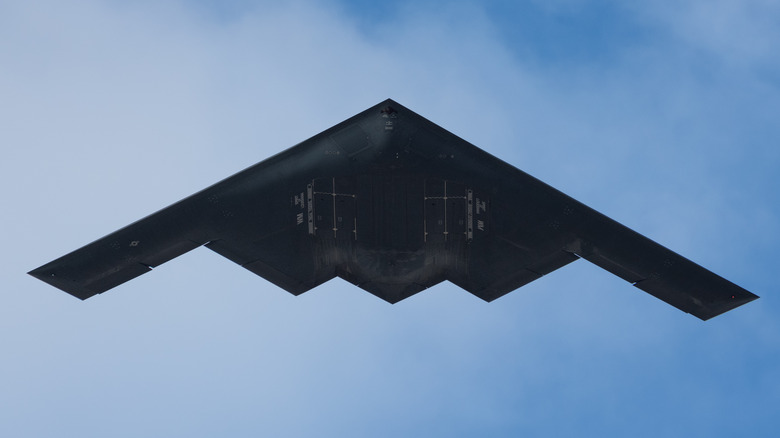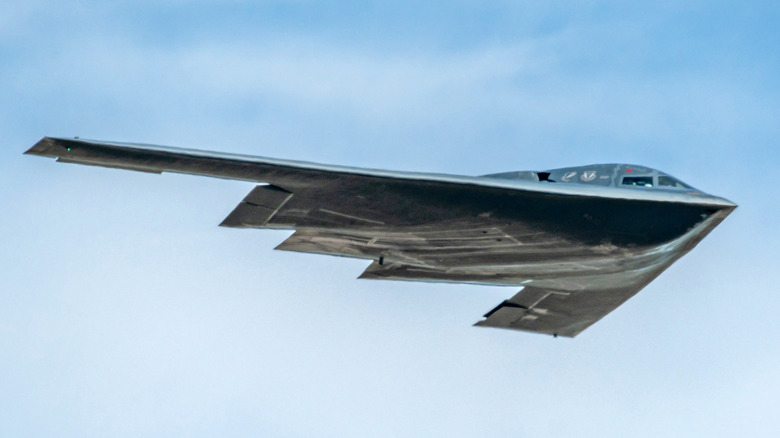B-2 Bomber's Rare Test Sends A Powerful Message To China — Here's Why It's Concerned
The United States flies a lot of impressive aircraft, but one of its most iconic is the B-2 Spirit. The long-range heavy strategic bomber has been dominating the skies since the 1990s, and while it's an old aircraft that's due to be replaced by the forthcoming B-21 Raider, it remains a highly capable platform with impressive abilities. The B-2 is designed to carry and deliver both conventional and thermonuclear weapons, but it recently learned a new trick.
During the 2024 Rim of the Pacific (RIMPAC) exercise, a B-2 successfully targeted, bombed, and sank the decommissioned USS Dubuque (LPD-8) in a Sink At-Sea Live-Fire Training Exercise (SINKEX). The B-2 didn't accomplish this with a high-tech missile; it used something far more mundane. To hit the ship, the B-2 dropped a low-cost, GPS-guided bomb called "Quicksink." While it may seem like a no-brainer that a strategic bomber can hit a naval ship and sink it, this particular bombing represents the first time anyone has even tried it since the end of World War II.
The exercise wasn't conducted merely to find an interesting way to scuttle the USS Dubuque — the bombing provided a great deal of data on the effectiveness of using different types of ordnance against large warships. The USS Dubuque was a relatively large vessel, displacing over 16,900 tons with an overall length of 569 feet, making the feat of sinking it that much more impressive. The exercise also proved a capability in anti-ship warfare that would counter a potential threat posed by the People's Republic of China in the Indo-Pacific region.
Why the test is making China sweat
China has a powerful military and numerous capabilities that are comparable to those of the United States. These include various methods for destroying naval vessels, including anti-ship missiles, torpedoes, and more. China also has modern aircraft carriers, such as the Liaoning, and is working on a fourth. However, China is still far behind the United States' 11 active aircraft carriers.
This new test opens up a new avenue of approach for targeting and taking out ships. The B-2 (and eventually the B-21) flies so high and can strike targets from so far away that there's little defense against a bomb dropped from one of them, conventional or otherwise. The U.S. doesn't just have one or two B-2s lying around either — it has 19 (according to the most recent count) and can launch them from anywhere in the world to target anywhere on the planet. The B-2's new anti-naval capability makes it a highly efficient ship killer, and China doesn't have many ways to counter it.
China is developing its own long-range strategic bomber, known only as the H-20, to try and match U.S. firepower. While that may one day amount to a similar anti-ship capability, that day is far in the future. Ultimately, the U.S. test demonstrates the strategic bomber could potentially sink a Chinese aircraft carrier should the two nations ever enter into a conventional armed conflict.

